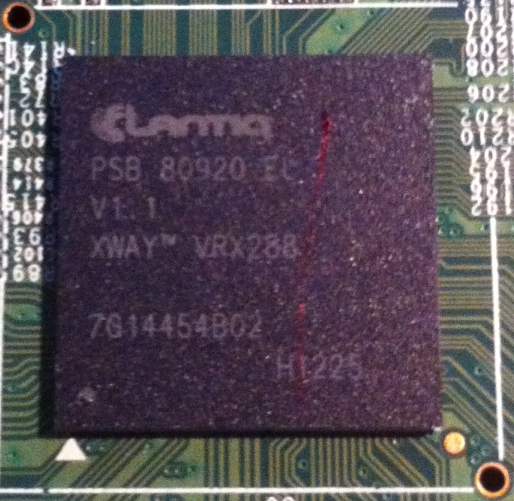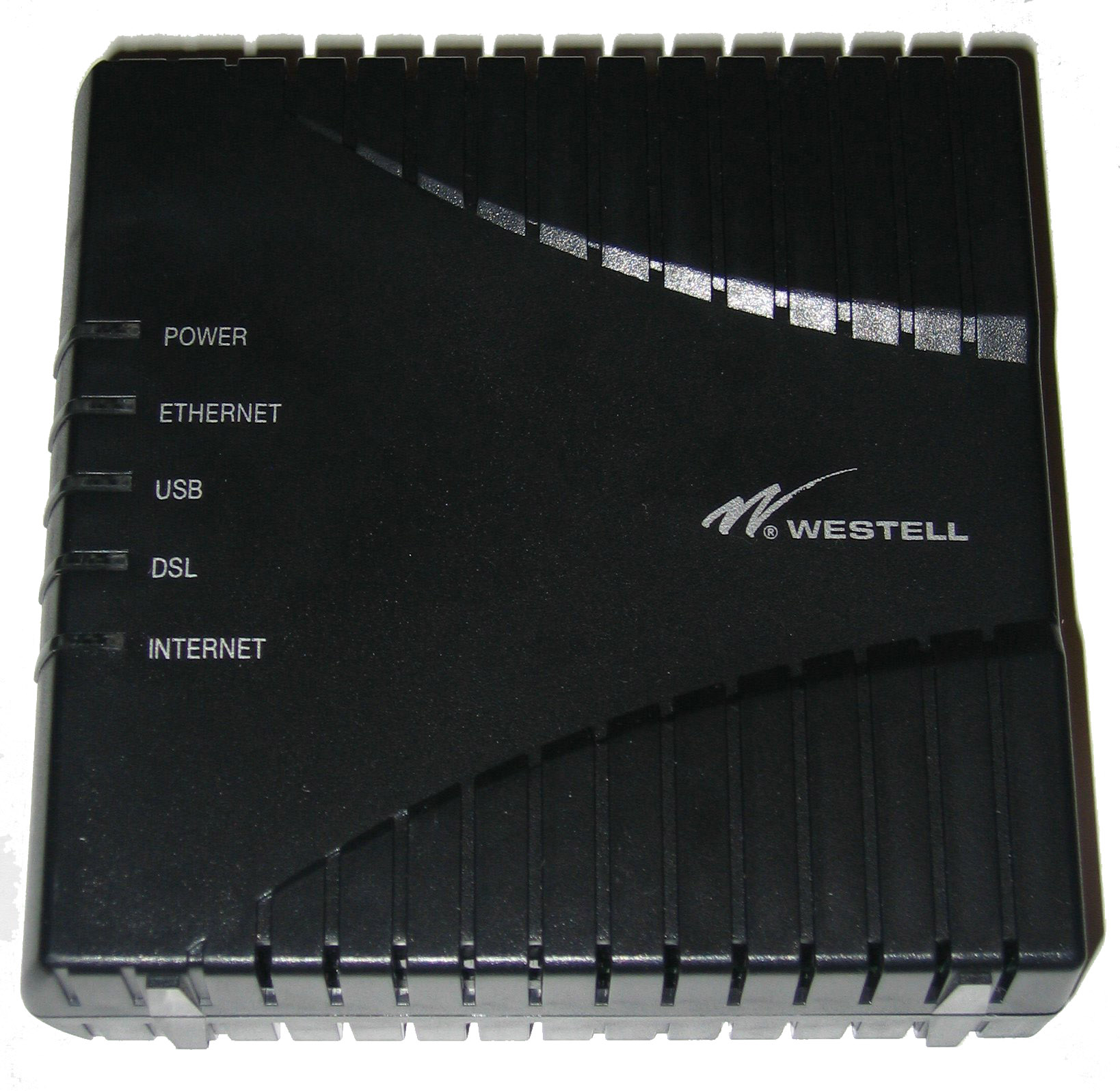|
DSLAM
A digital subscriber line access multiplexer (DSLAM, often pronounced ''DEE-slam'') is a network device, often located in telephone exchanges, that connects multiple customer digital subscriber line (DSL) interfaces to a high-speed digital communications channel using multiplexing techniques. Its cable internet (DOCSIS) counterpart is the cable modem termination system. Path taken by data to DSLAM # Customer premises: DSL modem terminating the Asymmetric digital subscriber line, ADSL, Single-pair high-speed digital subscriber line, SHDSL or VDSL circuit and providing a LAN or interface to a single computer or LAN segment. # Local loop: the telephone company wires from a customer to the telephone exchange or to a serving area interface, often called the "Last mile (telecommunications), last mile" (LM). # Telephone exchange: #* Main distribution frame (MDF): a wiring rack that connects outside subscriber lines with internal lines. It is used to connect public or private lines c ... [...More Info...] [...Related Items...] OR: [Wikipedia] [Google] [Baidu] |
XDSL Connectivity Diagram En
Digital subscriber line (DSL; originally digital subscriber loop) is a family of technologies that are used to transmit digital data over telephone lines. In telecommunications marketing, the term DSL is widely understood to mean asymmetric digital subscriber line (ADSL), the most commonly installed DSL technology, for Internet access. In ADSL, the data throughput in the upstream (networking), upstream direction (the direction to the service provider) is lower, hence the designation of ''asymmetric'' service. In symmetric digital subscriber line (SDSL) services, the downstream and upstream data rates are equal. DSL service can be delivered simultaneously with plain old telephone service, wired telephone service on the same telephone line since DSL uses higher frequency bands for data transmission. On the customer premises, a DSL filter is installed on each telephone to prevent undesirable interaction between DSL and telephone service. The bit rate of consumer ADSL services typ ... [...More Info...] [...Related Items...] OR: [Wikipedia] [Google] [Baidu] |
DSL Modem
A digital subscriber line (DSL) modem is a device used to connect a computer or Router (computing), router to a telephone line which provides the digital subscriber line (DSL) service for connection to the Internet, which is often called ''DSL broadband''. The modem connects to a single computer or router, through an Ethernet port, USB port, or is installed in a computer PCI slot. The more common DSL router is a standalone device that combines the function of a DSL modem and a Router (computing), router, and can connect multiple computers through multiple Ethernet ports or an integral wireless access point. Also called a residential gateway, a DSL router usually manages the connection and sharing of the DSL service in a home or small office network. Different DSL routers and modems support different DSL technology variants: VDSL, Symmetric digital subscriber line, SDSL, and ADSL. Description A DSL router consists of a box with an RJ11 jack to connect to a standard subscriber ... [...More Info...] [...Related Items...] OR: [Wikipedia] [Google] [Baidu] |
Asymmetric Digital Subscriber Line
Asymmetric digital subscriber line (ADSL) is a type of digital subscriber line (DSL) technology, a data communications technology that enables faster data transmission over copper telephone lines than a conventional voiceband modem can provide. ADSL differs from the less common symmetric digital subscriber line (SDSL). In ADSL, bandwidth and bit rate are said to be asymmetric, meaning greater toward the customer premises ( downstream) than the reverse ( upstream). Providers usually market ADSL as an Internet access service primarily for downloading content from the Internet, but not for serving content accessed by others. Overview ADSL works by using spectrum above the band used by voice telephone calls. With a DSL filter, often called ''splitter'', the frequency bands are isolated, permitting a single telephone line to be used for both ADSL service and telephone calls at the same time. ADSL is generally only installed for short distances from the telephone exchange (the l ... [...More Info...] [...Related Items...] OR: [Wikipedia] [Google] [Baidu] |
VDSL
Very high-speed digital subscriber line (VDSL) and very high-speed digital subscriber line 2 (VDSL2) are digital subscriber line (DSL) technologies providing data transmission faster than the earlier standards of asymmetric digital subscriber line (ADSL) G.992.1, G.992.3 (ADSL2) and G.992.5 (ADSL2+). VDSL offers speeds of up to 52 Mbit/s downstream and 16 Mbit/s upstream, over a single twisted pair of copper wires using the frequency band from 25 kHz to 12 MHz. These rates mean that VDSL is capable of supporting applications such as high-definition television, as well as telephone services (voice over IP) and general Internet access, over a single connection. VDSL is deployed over existing wiring used for analog telephone service and lower-speed DSL connections. This standard was approved by the International Telecommunication Union (ITU) in November 2001. Second-generation systems (VDSL2; ITU-T G.993.2 approved in February 2006) use frequencies of ... [...More Info...] [...Related Items...] OR: [Wikipedia] [Google] [Baidu] |
Serving Area Interface
The serving area interface or service area interface (SAI) is an outdoor enclosure or metal box that allows access to telecommunications wiring. Alternate names *Access point (AP) *Cabinet (cab) *B-box (breakout box) *Cross box *Cross-connect box *Jumper wire interface (JWI) *Outside plant interface (OPI) *Pedestal (ped) *Primary cross-connection point (PCP) (UK)"Multimedia Telecommunications" (BT Telecommunications Series), B. Whyte (Ed.), Springer 1997 *Secondary cross-connection point (SCP) (UK) *Telecom cabinet Function The SAI provides the termination of individual twisted pairs of a telephony local loop for onward connection back to the nearest telephone exchange (US: " central office" (CO)) or remote switch, or first to transmission equipment such as a subscriber loop carrier multiplexer and then to the exchange main distribution frame (MDF). In the United Kingdom, the components from the PCP onwards to the customer are known as " D-side" (distribution side), and f ... [...More Info...] [...Related Items...] OR: [Wikipedia] [Google] [Baidu] |
Main Distribution Frame
In telephony, a main distribution frame (MDF or main frame) is a signal distribution frame for connecting equipment (inside plant) to cables and subscriber carrier equipment ( outside plant). Overview The MDF is a termination point within the local telephone exchange where exchange equipment and terminations of local loops are connected by jumper wires at the MDF. All cable copper pairs supplying services through user telephone lines are terminated at the MDF and distributed through the MDF to equipment within the local exchange e.g. repeaters and DSLAM. Cables to intermediate distribution frames (IDF) terminate at the MDF. Trunk cables may terminate on the same MDF or on a separate trunk main distribution frame (TMDF). Like other distribution frames the MDF provides flexibility in assigning facilities, at lower cost and higher capacity than a patch panel. The most common kind of large MDF is a long steel rack accessible from both sides. On one side, termination blocks a ... [...More Info...] [...Related Items...] OR: [Wikipedia] [Google] [Baidu] |
Cable Modem Termination System
A cable modem termination system (CMTS, also called a CMTS Edge Router) is a piece of equipment, typically located in a cable company's headend or hubsite, which is used to provide data services, such as cable Internet or Voice over IP, to cable subscribers. A CMTS provides similar functions to a DSLAM in a digital subscriber line or an optical line termination in a passive optical network. Connections In order to provide high speed data services, a cable company will connect its headend to the Internet via very high capacity data links to a network service provider. On the subscriber side of the headend, the CMTS enables communication with subscribers' cable modems. Different CMTSs are capable of serving different cable modem population sizes—ranging from 4,000 cable modems to 150,000 or more, depending in part on traffic and thus number of channels allocated to each service group and the size of the service groups, although it is recommended for an I-CMTS to service, for ex ... [...More Info...] [...Related Items...] OR: [Wikipedia] [Google] [Baidu] |
Internet Protocol
The Internet Protocol (IP) is the network layer communications protocol in the Internet protocol suite for relaying datagrams across network boundaries. Its routing function enables internetworking, and essentially establishes the Internet. IP has the task of delivering Packet (information technology), packets from the source Host (network), host to the destination host solely based on the IP addresses in the packet Header (computing), headers. For this purpose, IP defines packet structures that encapsulation (networking), encapsulate the data to be delivered. It also defines addressing methods that are used to label the datagram with source and destination information. IP was the connectionless datagram service in the original ''Transmission Control Program'' introduced by Vint Cerf and Bob Kahn in 1974, which was complemented by a connection-oriented service that became the basis for the Transmission Control Protocol (TCP). The Internet protocol suite is therefore often referre ... [...More Info...] [...Related Items...] OR: [Wikipedia] [Google] [Baidu] |
Handover Distribution Frame
In cellular telecommunications, handover, or handoff, is the process of transferring an ongoing call or data session from one channel connected to the core network to another channel. In satellite communications it is the process of transferring satellite control responsibility from one earth station to another without loss or interruption of service. Terminology American English uses the term ''handoff'', and this is most commonly used within some American organizations such as 3GPP2 and in American originated technologies such as CDMA2000. In British English the term ''handover'' is more common, and is used within international and European organisations such as ITU-T, IETF, ETSI and 3GPP, and standardised within European originated standards such as GSM and UMTS. The term handover is more common in academic research publications and literature, while handoff is slightly more common within the IEEE and ANSI organisations. Purpose In telecommunications there may be differ ... [...More Info...] [...Related Items...] OR: [Wikipedia] [Google] [Baidu] |
Frame Relay
Frame Relay (FR) is a standardized wide area network (WAN) technology that specifies the Physical layer, physical and data link layers of digital telecommunications channels using a packet switching methodology. Frame Relay was originally developed as a simplified version of the X.25 system designed to be carried over the emerging Integrated Services Digital Network (ISDN) networks. X.25 had been designed to operate over normal telephone lines that were subject to noise that would result in lost data, and the protocol featured extensive error correction to address this. ISDN offered dramatically lower error rates, in effect zero, and the extensive error correction overhead was no longer needed. The new protocol suite was essentially a cut-down X.25 with no error correction, leading to lower overhead, better channel efficiency, and often significantly overall higher performance than X.25. Like X.25, Frame Relay is normally used in a circuit switched layout, where connections betw ... [...More Info...] [...Related Items...] OR: [Wikipedia] [Google] [Baidu] |
Backbone Network
A backbone or core network is a part of a computer network which interconnects networks, providing a path for the exchange of information between different LANs or subnetworks. A backbone can tie together diverse networks in the same building, in different buildings in a campus environment, or over wide areas. Normally, the backbone's capacity is greater than the networks connected to it. A large corporation that has many locations may have a backbone network that ties all of the locations together, for example, if a server cluster needs to be accessed by different departments of a company that are located at different geographical locations. The pieces of the network connections (for example: Ethernet, wireless) that bring these departments together is often mentioned as network backbone. Network congestion is often taken into consideration while designing backbones. One example of a backbone network is the Internet backbone. History The theory, design principles, and fi ... [...More Info...] [...Related Items...] OR: [Wikipedia] [Google] [Baidu] |



